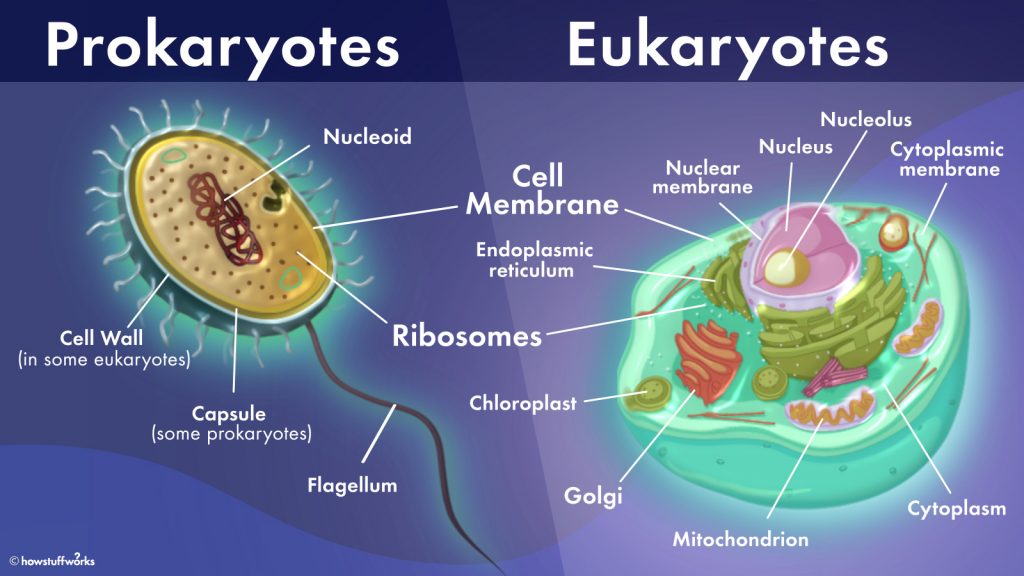- The size of Prokaryotic cell range from 0.2-5.0 µm in diameter while that of Eukaryotic cells range from 10-40 µm in diameter.
- Prokaryotic cells do not have a nuclear membrane and the nuclear material consisting of a single chromosome and lies in the cytoplasm and is called nucleoid. Eukaryotic cells, on the other hand, have a distinct nucleus bound by a nuclear envelope.
- Prokaryotic cells lack membrane-bound organelles while Eukaryotic cells contain membrane-bound organelles like Lysosomes, Golgi apparatus, Endoplasmic reticulum, Mitochondria and Chloroplasts, etc. in their cytoplasm.
- Flagella in Prokaryotes consist of two protein building blocks while flagella, if present, in Eukaryotes are complex consisting of multiple microtubules.
- Prokaryotes posses’ glycocalyx as a capsule or slime layer while it is present in only in some cells that lack a cell wall.
- Cell wall is usually present in Prokaryotes and is chemically complex (e.g., peptidoglycan of typical bacterial cell wall). Eukaryotes lack cell wall commonly and, if present, are chemically simple.
- The plasma membrane in Prokaryotes do not contain carbohydrates and generally lacks sterols while that of Eukaryotes contain carbohydrates and generally lacks sterols that serves as receptors.
- The cytoplasm in prokaryotes does not contain cytoskeleton or cytoplasmic streaming while it is present in Eukaryotic cells.
- Prokaryotic cells contain smaller ribosome’s (70S) while Eukaryotic cells contain small (70S) in organelles and larger (80S) in the cytoplasm.
- The DNA in Prokaryotes is arranged as a single circular chromosome and lacks histone proteins while it is present as multiple linear chromosomes associated with histones in Eukaryotes.
- Cell division in Prokaryotes is generally by binary fission while it occurs by mitosis in Eukaryotes.
- Sexual reproduction in Prokaryotes does not involve meiosis and DNA transfer occurs through conjugation while sexual reproduction in Eukaryotes involves meiosis.
Conclusion:
Prokaryotes are mostly unicellular cells with simple cellular organization and they live in nearly all environments including extreme condition while Eukaryotes are mostly multicellular and have more complex organization. Eukaryotes contain many subcellular structure that play important roles in energy balance, metabolism and gene expression.
Have a brief details on Prokaryotic cells and Eukaryotic cells




















